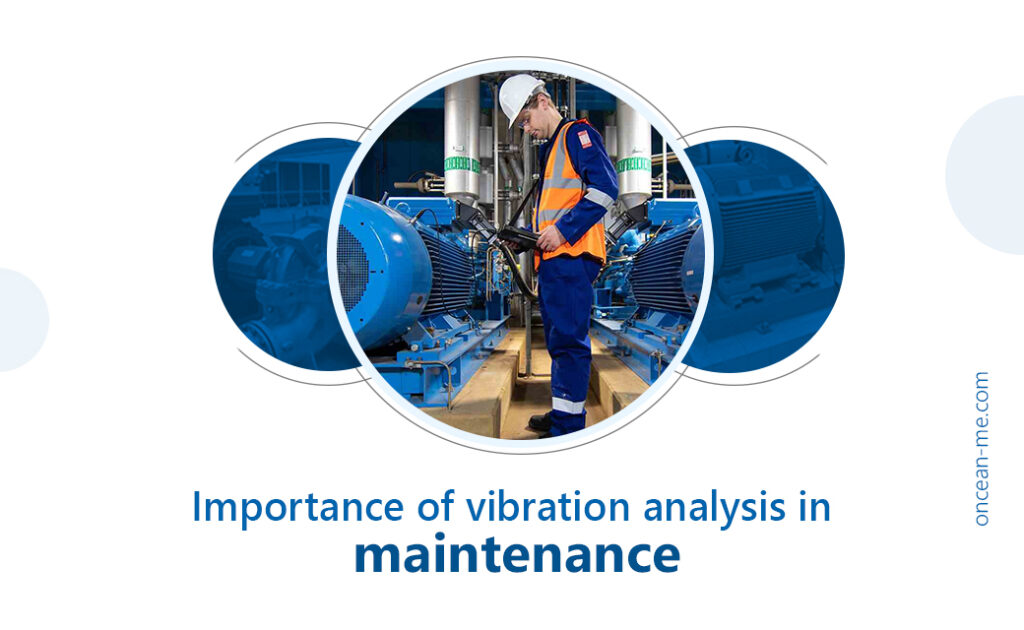Vibration analysis is the process of collecting and measuring vibration data to find equipment failures and possible places where they might happen. Turbines, pumps, conveyor parts, gears, fans, rotors, and so on are all examples of equipment that can benefit from this technique. Using vibration analysis, you can see if any of the above parts aren’t working right and fix them if they are.
A Synopsis of Vibration Analysis
- A skilled vibration analyst can pick up the basics of vibration analysis and the common causes of equipment breakdown in no time.
- Vibration analysis, which gives numerical data, can be used to look for signs of machine failure or wear.
- During reactive maintenance, vibration data is collected and used to figure out if broken parts need to be replaced.
- Preventive maintenance is a routine service that keeps machines running and reduces the chance that they will break down unexpectedly, which can lead to costly downtime.
- With the help of predictive maintenance, you may be able to better plan for regular maintenance and the inevitable downtime that comes with it.
What Are the Benefits of Vibration Analysis in Maintenance?
- The possibility of failure can be easily identified.
- More control over the downtime and maintenance processes
- VA has a long history of reliability.
- VA can be used for more than just the most common search for “bearing failure.”
- Reduce unplanned downtime.
Vibration Analysis Can Prevent Catastrophic Equipment Failure
Vibration analysis will help you to evaluate equipment health to avert failure. How? Well, modern vibration analysers can give you a complete picture of what is going on with a piece of equipment.
Many modern vibration analysis tools can show the whole frequency spectrum and time on three axes at the same time. This can help prevent catastrophic equipment failure. The person doing the analysis must be knowledgeable about the principles of vibration analysis, the failure processes of the equipment in issue, and how to use this knowledge for the results to be helpful.
You may also like to read:
- Radio remote control for EOT cranes
- Cloud-based Vibration Monitoring: A Defence Against Unplanned Downtime in Machines
- Partial Discharge Testing: Online and Offline Partial Discharge
Literature of Vibration Analysis
When a part or a whole piece of equipment breaks, the normal vibration pattern is changed. Something is out of whack, broken, misaligned, too tight, too loose, bent, or running too fast are a few examples of faulty situations. The following are four areas where vibration analysis can be of use:
Rotor condition
When something goes wrong with a rotor, it becomes less stiff and vibrates less often. Vibration can also be altered by an unsteady or imbalanced rotor. Vibration analysis can also determine if the rotor bar in a motor is damaged and if the air gap between the rotor and stator is centred.
Bearing condition
Vibration analysis can identify a variety of bearing problems, including overheating, brinelling (true or false), wrong installation, excessive loads, reverse loading, non-concentric bearings, improper fit (too loose or too tight), and misalignment.
Gearbox condition
Vibration monitoring may tell you a lot about your gearbox, such as whether a cracked gear has allowed a faulty piece to enter the load zone. Impact and friction cause the gearbox to vibrate differently as a result.
Pump condition
Vibration analysis can help find problems like a misaligned pump or a base that is not even, air pockets (bubbles), spinning parts that are stuck together, and torsion between the pump and the motor.
6 Key Reasons Why Your Maintenance Needs Vibration Analysis
There are many advantages to vibration analysis, but we have distilled them down to six key ones.
1. It isn’t intrusive.
There is no need to stop the production process for vibration analysis because it can be done while the machine is running.
2. It may be used to set baselines for equipment.
Vibration analysis can be used to set acceptance testing criteria for setting up and maintaining equipment.
3. It’s ideal for particular sorts of equipment.
Nobody likes to stop vital production or brave unpleasant conditions unless they have to. Vibration analysis works well for important, heavily used, and improperly placed machines, especially when it is done continuously.
4. It is cost-effective.
Employing vibration analysis can make equipment last longer, be safer, and get more work done because problems can be found before they cause downtime.
5. It’s quantitative.
The science of vibration analysis is highly quantitative. It makes use of high-tech hardware and software to provide information that engineers and analysts can use.
6. It can be continuous.
Equipment vibrations may be tracked in real-time using various tools and software that can be put on the device. You may get readings delivered right to your laptop, tablet, or mobile device.
Conclusion
Thus concludes our brief introductory remarks on vibration analysis. It’s been around for a while, but improvements in technology have made it a more formidable instrument for spotting trouble with your gear before it breaks down.



